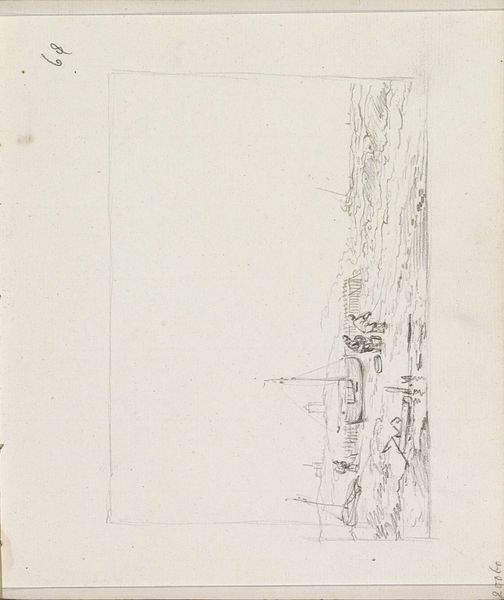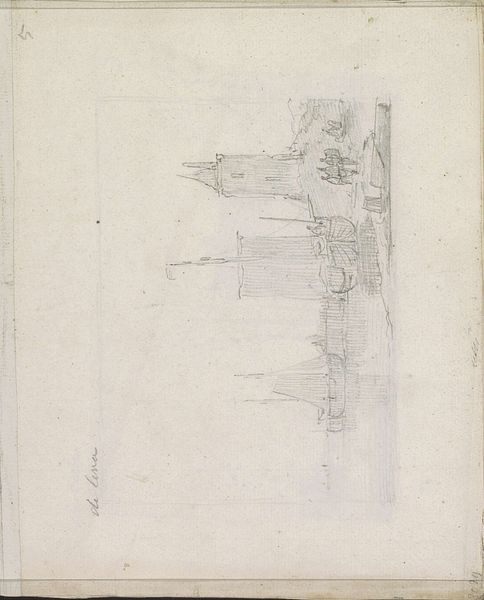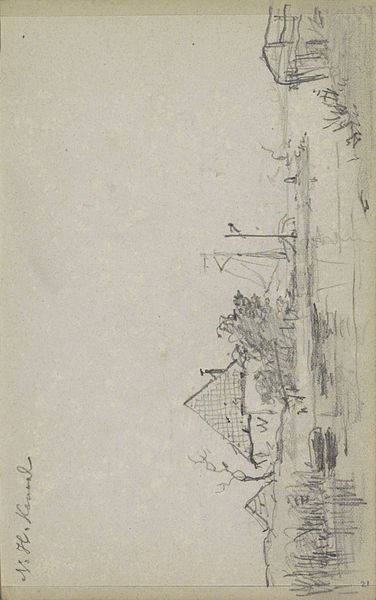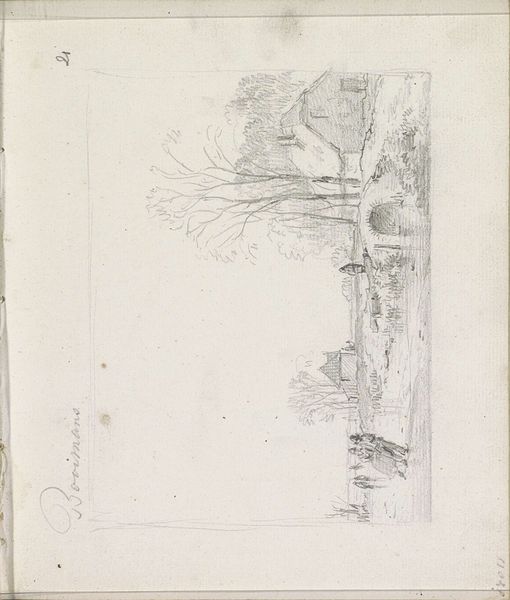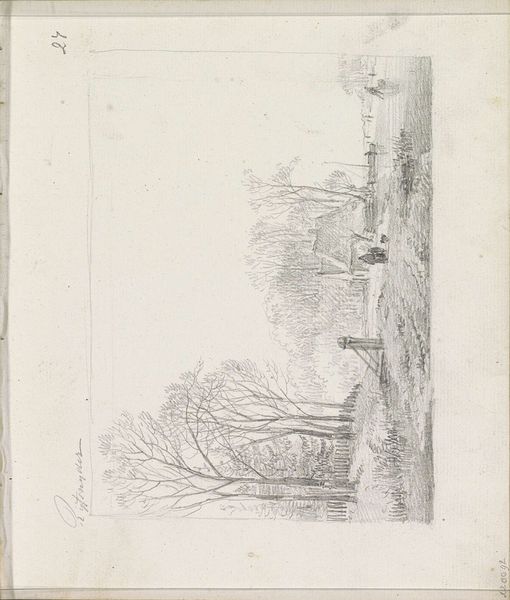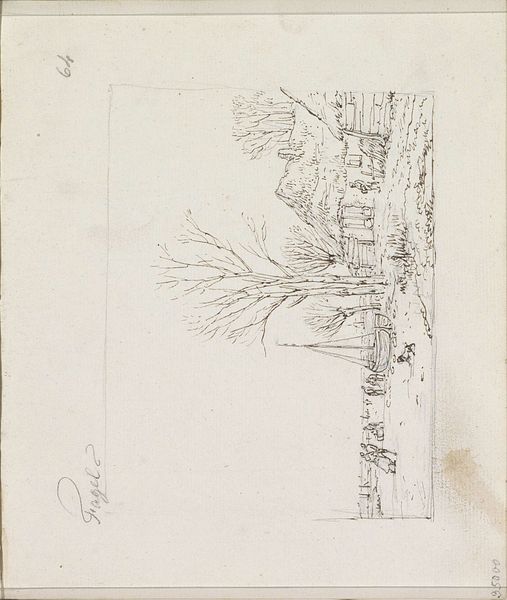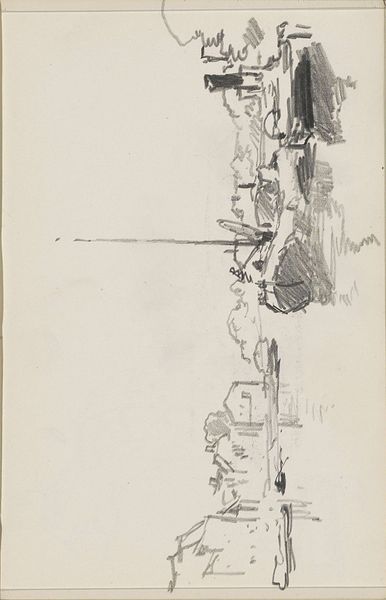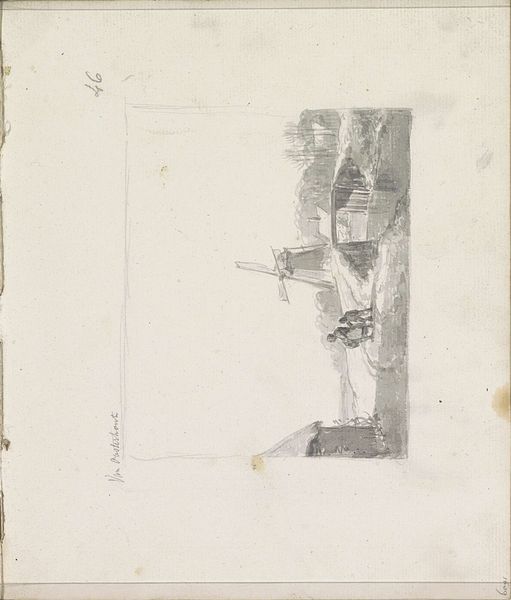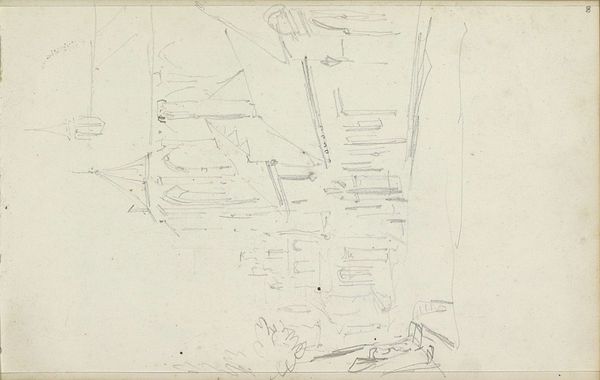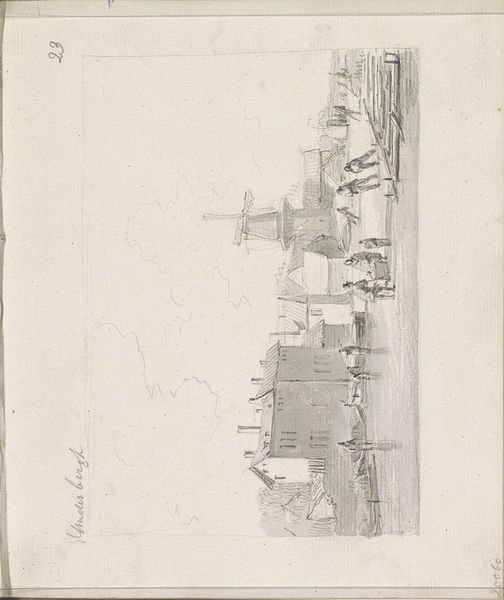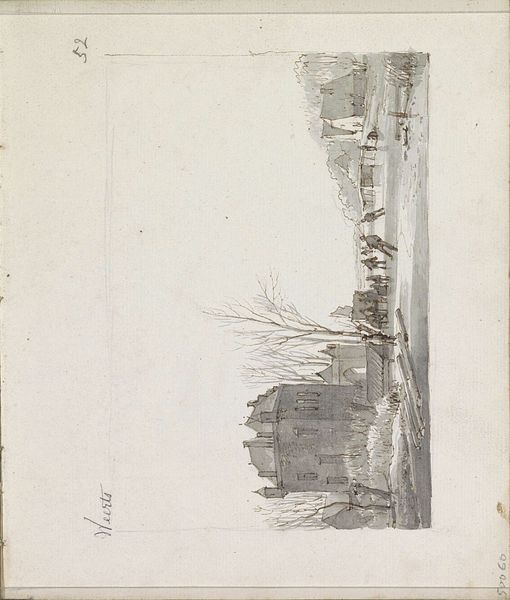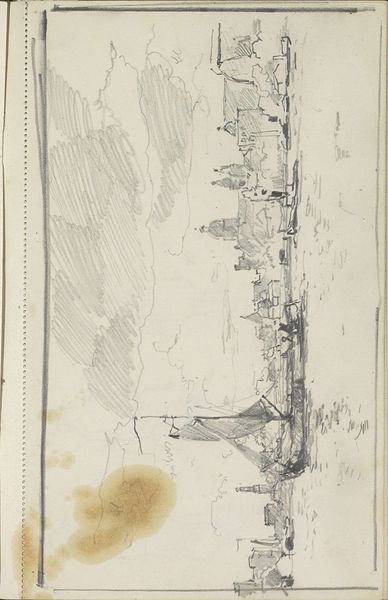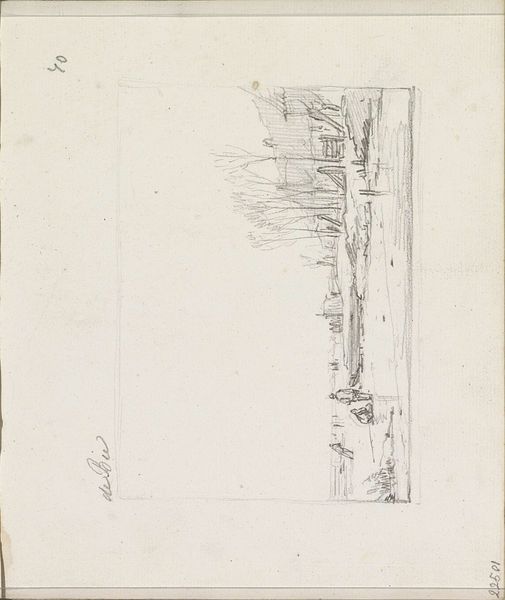
drawing, pencil
#
drawing
#
amateur sketch
#
light pencil work
#
pencil sketch
#
incomplete sketchy
#
landscape
#
personal sketchbook
#
idea generation sketch
#
sketchwork
#
romanticism
#
pencil
#
sketchbook drawing
#
sketchbook art
#
realism
#
initial sketch
Copyright: Rijks Museum: Open Domain
Curator: So, here we have “Bomschuiten op het strand,” a pencil drawing Andreas Schelfhout created sometime between 1825 and 1829. It's currently held at the Rijksmuseum. Editor: Hmm, my first thought? Ephemeral. It’s so delicate, almost a whisper of a scene. Those bomschuiten, the boats, seem like they might fade right into the paper. There’s a certain melancholy, too. Curator: Indeed. Schelfhout was working within the Romantic tradition, even dabbling in early realism, and those movements often use imagery of nature—like these beachside boats—to contemplate larger ideas of transience. Consider the symbolic weight of the sea. Editor: Totally! The sea—a mirror to the soul, endlessly shifting. The way he captures the light... It’s like trying to hold onto a memory that's already dissolving. Reminds me of trying to draw waves as a kid, never quite getting the movement right. Curator: It reads as an initial sketch, capturing fleeting atmospheric conditions. The slight, suggestive strokes imply the busyness of the beach, figures interacting around the boats, livestock, the quiet drama of human presence alongside the vastness of the sea. All are united by similar, almost minimalist marks, creating harmony across diverse parts of the image. Editor: It also feels very personal, like a glimpse into his private world. Imagine Schelfhout on that beach, quickly trying to capture the feeling of the place before it disappeared. You can almost feel the wind. I would expect to see this as one image in a sketchbook rather than framed. Curator: Absolutely. The drawing’s incompleteness amplifies this notion; we don't receive it as the end-result or finalized piece. It carries symbolic import as idea, not object. We get a glimpse into the artistic process itself, its initial, generative state, the spark that becomes a more complex work. Editor: Definitely agree. A whisper that carries the weight of the world on its breath. You look at a thing like this, you know, and think, what remains when we're gone? Heavy, I suppose. Curator: Indeed. A subtle contemplation of the interplay between human existence and nature’s enduring presence.
Comments
No comments
Be the first to comment and join the conversation on the ultimate creative platform.
